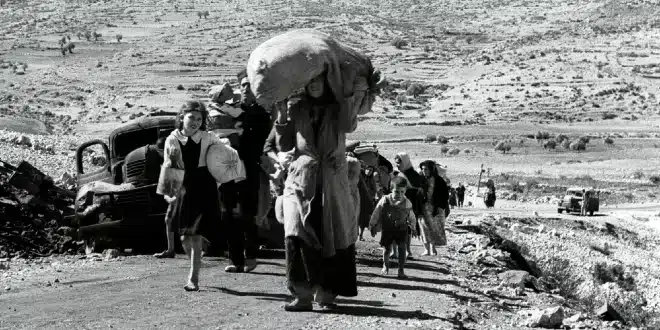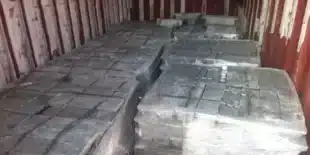On Wednesday, Palestinians across the Middle East commemorated the anniversary of their mass displacement from what is now Israel with protests and various events. This remembrance comes amid growing concerns about the humanitarian crisis in Gaza.
The Nakba, meaning “catastrophe” in Arabic, refers to the expulsion of 700,000 Palestinians during the 1948 conflict surrounding the creation of Israel. Since the latest conflict began, over twice that number have been displaced within Gaza. Triggered by Hamas’ October 7 attack on Israel, the war has caused U.N. agencies to report that 550,000 people, nearly a quarter of Gaza’s population of 2.3 million, have been displaced in just the last week. Israeli forces have advanced into Rafah, near the Egyptian border, and re-entered parts of northern Gaza.
Umm Shadi Sheikh Khalil, now living in a tent in Deir al-Balah after being displaced from Gaza City, said, “We lived through the Nakba not just once, but several times.” There are about 6 million Palestinian refugees and their descendants living in refugee camps in Lebanon, Syria, Jordan, and the Israeli-occupied West Bank. In Gaza, these refugees make up the majority, with most families originally from central and southern Israel. Israel opposes the Palestinian right of return, fearing it would result in a Palestinian majority within its borders.
In Gaza, refugee camps have faced intense fighting. In other camps across the region, the conflict has reignited painful memories of past violence. At a senior center in Beirut’s Shatila refugee camp, Amina Taher recalled the day in 1948 when her house in Deir al-Qassi, now in northern Israel, was destroyed by Israeli shelling. Taher, who was three at the time, was rescued, but her younger sister was killed. Watching similar scenes unfold in Gaza on the news, she said, “When I would watch the news, I had a mental breakdown because then I remembered when the house fell on me.”
Daoud Nasser, also living in Shatila, fled from Balad al-Sheikh near Haifa at age six. His father once attempted to return but found their home occupied by a Jewish family. Nasser expressed a desire to return if the border were less fortified: “I would run. I’m ready to walk from here to there and sleep under the olive trees on my own land.”
The recent conflict began with Hamas’ attack on southern Israel, resulting in the deaths of around 1,200 people, mostly civilians, and the capture of 250 hostages. Israel’s military response has devastated Gaza, with 80% of the population displaced. Gaza’s Health Ministry reports over 35,000 Palestinian deaths. The U.N. has described northern Gaza as experiencing a “full-blown famine.”
Israel’s stated aim is to dismantle Hamas and secure the return of the remaining 100 hostages and the bodies of 30 others. Prime Minister Benjamin Netanyahu has called Rafah, a southern city near Egypt, Hamas’ last stronghold and promised victory. However, Hamas militants have regrouped, suggesting the conflict may continue.
The fighting has impacted Gaza’s main cargo terminal, the Kerem Shalom crossing, making it mostly inaccessible. Israel’s capture of the Gaza side of the Rafah crossing with Egypt has led to its closure, straining relations with Egypt. Aid efforts have been severely hampered by the closure of these crossings.
Egyptian Foreign Minister Sameh Shoukry, in a statement on Tuesday, accused Israel of “distorting the facts” and condemned its attempts to blame Egypt for the Rafah closure. He responded to Israeli Foreign Minister Israel Katz’s remarks about reopening the Rafah crossing for humanitarian aid. Egypt has been mediating cease-fire talks between Israel and Hamas, but the latest negotiations ended without resolution.


